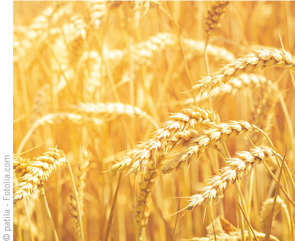Targeted pesticide residue analysis is a well-established and essential part of modern food testing. Laboratories routinely determine pesticides present in food samples against a specific target list to ensure food products comply with the maximum residue levels (MRLs) set by governments (European Commission) and national food safety authorities.
 Growing concerns over food safety and expanding international trade have led to the development and enforcement of stricter pesticide regulations in recent years. In 2014, China’s Ministry of Agriculture and Ministry of Health jointly issued a revised national food safety standard, which expanded the number of categories of pesticide residues and total number of MRLs. Together with the Japanese Positive List System and European Union (EU) Directive No 752/2014, these standards are amongst the strictest food safety regulations in the world.
Growing concerns over food safety and expanding international trade have led to the development and enforcement of stricter pesticide regulations in recent years. In 2014, China’s Ministry of Agriculture and Ministry of Health jointly issued a revised national food safety standard, which expanded the number of categories of pesticide residues and total number of MRLs. Together with the Japanese Positive List System and European Union (EU) Directive No 752/2014, these standards are amongst the strictest food safety regulations in the world.
Traditionally, separation technologies such as gas chromatography (GC) and liquid chromatography (LC), coupled with triple quadrupole (QqQ) mass spectrometry (MS), have formed the mainstay of targeted pesticide residue quantitation workflows. The high sensitivity and selectivity offered by these QqQ-based techniques allow analysts to confidently identify and quantify even trace levels of known contaminants, while their robustness ensures fast, reliable, and cost-effective routine analysis.
Yet new pesticides are continually being developed and applied to crops around the world. The growing complexity of global food supply chains means that pesticides approved for use in one country can unexpectedly end up in food consumed in another, where the pesticides are not approved. Other chemicals, previously undetected in food samples and not on target lists, can also enter food chains during product preparation, transport, and storage from an often-surprising range of sources.
As a result, food safety laboratories are not only faced with an increasing number of analytes to screen for—they must be vigilant for new chemicals too. Of course, all of this must be achieved with high turnaround times and at a competitive cost per sample. And as food safety standards continue to evolve, laboratories need to be sure that the technology they use today will still meet their needs five years down the line.
Confident Routine Quantitation
Food safety is an evolving field. Technological advances result in ever lower limits of detection and quantitation, and greater insight into the toxicological effects of the chemicals we use in industry and agriculture mean that MRLs are continually being revised. In 2016 for example, the EU announced amendments to regulations governing MRLs for a number of pesticides found in a wide range of products, including the organophosphate insecticide chlorpyrifos.
As food safety standards become increasingly strict, what was once the lower end of a permissible pesticide residue level may be the upper end tomorrow. Laboratories therefore need to be confident that the technology they depend on to quantify these analytes is ready for future challenges.
For instance, high-resolution accurate mass (HRAM) Orbitrap MS from Thermo Fisher Scientific offers sensitivity that can help to safeguard laboratories against changes in MRLs. Hybrid quadrupole Orbitrap mass analyzer instruments combine quadrupole precursor selection with high-resolution accurate mass detection of product ions. The data is acquired at a resolution that can surpass quadrupole-time-of-flight instruments. This selectivity and mass accuracy helps to lower or even eliminate interference and permit lower limits of detection and accurate quantification.
Since MRLs vary for different pesticide-commodity combinations, the techniques used to analyze pesticide residues must be able to identify and quantify analytes over a wide dynamic range. EU limits for pesticide residues in beetroot, for example, vary from 30 milligram/kilogram to as little as 0.03 milligram/kilogram depending on the analyte. The Thermo Scientific Q Exactive Focus hybrid quadrupole-Orbitrap mass spectrometer is an option to meet this challenge, enabling quantitation over a wide dynamic range.
Identifying the Unknown
Routine quantitation of analytes against target lists is incredibly important for the protection of consumer safety, yet for many food safety laboratories it’s only part of the story. As food supply chains become increasingly global and complex, the risk of contamination with previously undetected chemicals becomes greater. However, the detection and identification of these unexpected analytes can be one of the most challenging tasks in pesticide analysis.
ACCESS THE FULL VERSION OF THIS ARTICLE
To view this article and gain unlimited access to premium content on the FQ&S website, register for your FREE account. Build your profile and create a personalized experience today! Sign up is easy!
GET STARTED
Already have an account? LOGIN
